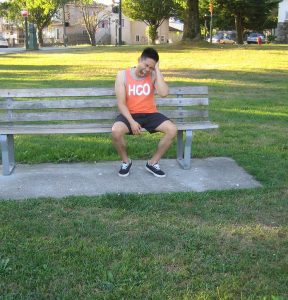Cauliflower ear or auricular hematoma is characterized as a deformed external ear if an injury to the outer ear was not properly treated. This results to the distortion of the external ear or deformity that is strikingly similar in appearance to a “cauliflower” over time.
Who are at risk?
Cauliflower ear is prevalent among athletes who engage in sports that involves repeated friction or blunt force trauma to the ears such as in rugby, boxing, water polo, martial arts and wrestling.
What are the possible causes?
The external ear is mainly comprised of elastic cartilage. This cartilage provides the external ear its form but also allows movements and flexibility. Since the ear cartilage does not have its own supply of blood, it relies on the blood flow from the attached skin to supply essential nutrients.
There are 2 main causes for cauliflower ear such as:

- Blunt force trauma that results to bleeding in between the skin and the cartilage. A hematoma develops amidst the cartilage and the adjacent skin which disrupts with the flow of blood to the cartilage.
- Repeated friction injuries to the ear such as a wrestler’s ear that is compressed and rubbed against the mat. Due to the repeated friction, the skin and cartilage separates which result to bleeding. This results to the formation of a hematoma in between the skin and cartilage.
If not promptly treated, the hematoma forms abnormal tissue that blocks the cartilage from the skin. This results to the death of the underlying cartilage tissue that causes its “cauliflower” appearance.
Management
When the earlobe is damaged, an ice pack should be applied on the ear using moderate compression. If a hematoma forms, it is usually drained by the doctor to prevent permanent deformity of the earlobe.
When the ear is drained, the doctor might utilize either a hollow needle or create a small-sized incision. Once the hematoma is cleared, compressive dressing is applied and secured in place so that the skin can reattach to the cartilage in the ear. The dressing is left in place for 3-5 days and replaced if needed. Infection can be prevented by antibiotics.
In case the cauliflower ear has formed and draining is considered late, the doctor will decide to fix and restore the natural appearance of the ear. The doctor might thin down the dense cartilage and reposition the skin over it.
The bandages might be used for up to a week to regulate the bleeding and swelling. Any swelling and bruising from the procedure is expected to dissipate within 10-14 days while the sutures are removed after 7 days.

